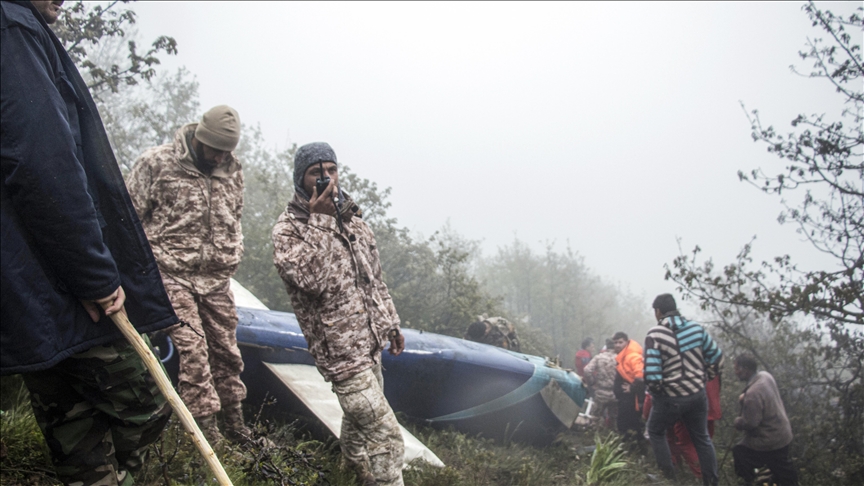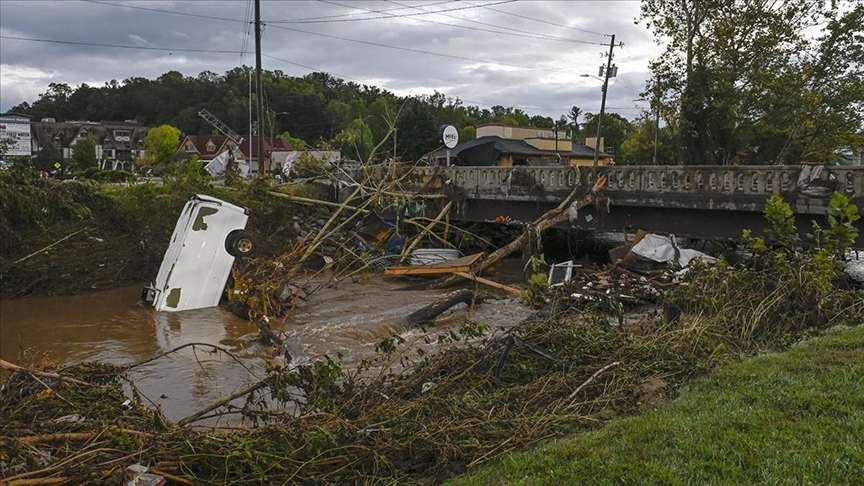3 QUESTIONS – Iranian President Raisi’s helicopter crash and its aftermath
The author is a faculty member at Türkiye’s National Intelligence Academy
ANKARA
Hakki Uygur penned an analysis for Anadolu, addressing the helicopter crash involving Iranian President Ibrahim Raisi and Foreign Minister Hossein Amir-Abdollahian and possible scenarios as developments unfold.
What happened on Sunday?
On May 19, at around 4.30 p.m. local time (1300GMT), Iranian news agencies reported that a helicopter carrying President Ebrahim Raisi had crashed.
Raisi had come to a site on the border between Iran and Azerbaijan, where he and his counterpart from the neighboring country, Ilham Aliyev, inaugurated the Giz Galasi hydroelectric complex, built jointly by the two nations on the Aras River.
While traveling back to the northwestern city of Tabriz from the Khudafarin region, Raisi had chosen to go by helicopter. He and his accompanying delegation, including Foreign Minister Hossein Amir-Abdollahian, departed in three helicopters.
Soon after, Iranian officials announced that the helicopter carrying the president and foreign minister had made a hard landing.
It was confirmed that Raisi, Amir-Abdollahian, the governor East Azerbaijan province, and Tabriz’s Friday prayer imam were among those on board.
Initial reports suggested that Raisi and the other passengers had been reached and that there were no casualties, but such reports later proved untrue.
The helicopter crashed in a mountainous area within the administrative limits of Tabriz, and Iran’s interior minister said a search and rescue operation could not be carried out from the air due to poor weather conditions.
Iran’s supreme leader Ayatollah Ali Khamenei called for prayers, indicating that a potential worst-case scenario could take place. Rescue teams faced difficulties reaching the crash site due to the harsh weather and terrain, with some teams reportedly getting lost.
The wreckage was finally located on Monday morning, with Türkiye deploying an Akinci drone to joining the search. No survivors were found.
Following these developments, government officials convened to discuss how to deal with the crisis, while some news agencies reported that Iran’s Supreme National Security Council met at Khamenei’s office.
Accident or sabotage?
While concrete evidence remains lacking, speculations of sabotage have arisen amid heightened tensions between Israel and Iran.
The recent missile and drone attack that Iran launched against Israel on April 13 saw no significant retaliation. Israel had not responded in kind due in part to US pressure.
If Israeli saboteurs were behind this crash, it would be very easy to deny for Tel Aviv. Only the two sides aware of what had happened, which could potentially ease heightened tensions for a while.
The involvement of domestic political factions also cannot be ruled out. The decision to fly in a mountainous region in bad weather in a very old helicopter adds credence to such speculations.
In domestic politics, with Raisi out of the picture, the chances of supreme leader Khamenei’s son, Mojtaba Khamenei, to succeed his father have increased considerably.
Accordingly, the current parliament speaker Mohammad Bagher Ghalibaf, an important ally of Mojtaba Khamenei’s, now has a better chance of becoming president in the election that will now be held within 50 days.
This, making Iran’s administration more uniform, could pave the way for a smoother post-Khamenei transition.
Possible regional impact
If the crash and Raisi’s death are deemed a mere accident, this could minimize the impact on the region.
According to the Iranian Constitution, if the president dies or is rendered incapable to carry out their duties, the first vice president assumes power temporarily until a new president is elected within 50 days.
Meanwhile, Iran’s known domestic and foreign policies will continue, largely dictated by the supreme leader Khamenei.
Even if sabotage is involved, it is likely to remain undisclosed and may not have much impact on regional developments.
However, given the already tense and fragile regional balance following Oct. 7, a more aggressive course of action could involve a very different response against Israeli targets within their country or in a third nation.
Nonetheless, it is essential to underscore the absence of any evidence pointing to sabotage at present.
*Opinions expressed in the articles are those of the author and may not reflect Anadolu’s editorial policy.
Anadolu Agency website contains only a portion of the news stories offered to subscribers in the AA News Broadcasting System (HAS), and in summarized form. Please contact us for subscription options.




